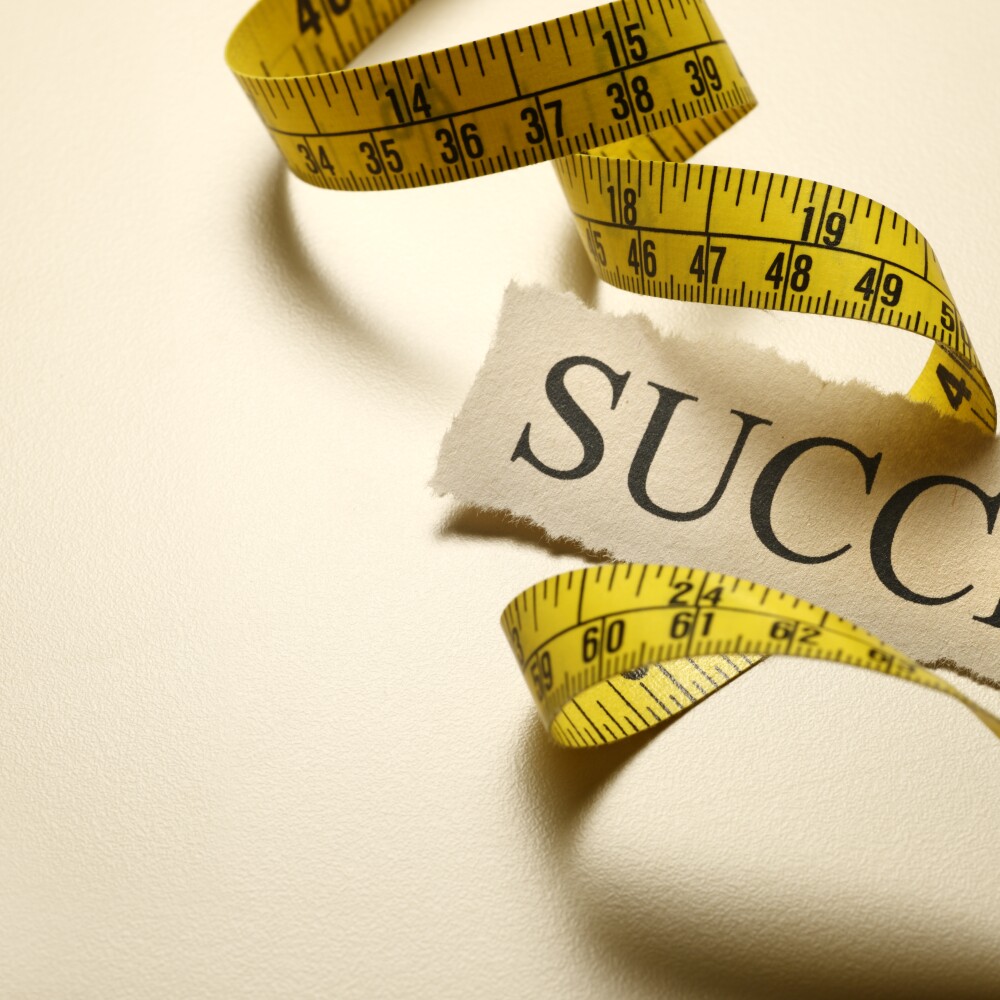
-
What is the Achievement Gap?
- What is the Achievement Gap?
- Researchers Have Been Studying the Gap for Decades
- The Achievement Gap Has Persisted Over Time
- Recent Evidence That Improvement is Possible
- The Gap Matters Because of Its Lasting Impact
- Why Does the Gap Exist
- Creating Opportunity for All Students
- Sources
The “achievement gap,” also called the “opportunity gap,” is the difference in educational achievement between groups of students, especially between students of different races or socioeconomic statuses.
In the United States, there are persistent gaps separating students: on average, black and Hispanic students score below their white peers in math and reading and graduate from high school and college at lower rates. Students who come from families with more economic resources similarly outperform peers who have less.
Using public data from Stanford’s Center for Education Policy Analysis, The New York Times created an interactive graphic that shows the gap separating white children and their black and Hispanic peers.
Stanford’s Center for Education Policy Analysis
Heather C. Hill, Chalkbeat, 50 years ago, one report introduced Americans to the black-white achievement gap. Here’s what we’ve learned since. (July 13, 2016)
James S. Coleman, U.S. Department of Health, Education, and Welfare, Equality of Educational Opportunity (1966)
NCES, Achievement Gaps
Motoko Rich, Amanda Cox, and Mathew Bloch, New York Times, The Upshot: Money, Race and Success: How Your School District Compares (April 29, 2016)
“Equality of Educational Opportunity,” the so-called “Coleman report,” first introduced America to this gap 50 years ago.
As part of the Civil Rights Act of 1964, the study was commissioned by the U.S. Office of Education to examine educational inequality in the United States, including differences between schools attended by white and black students.
James S. Coleman and his team collected data from 4,000 schools, 66,000 teachers, and more than half a million elementary, middle and high school students.
The 749-page report found large achievement gaps separating black and white students. It also found that family background explained most of the gap in achievement.
It stated: “One implication stands out above all: That schools bring little influence to bear on a child’s achievement that is independent of his background and general social context; and that this very lack of an independent effect means that the inequalities imposed on children by their home, neighborhood, and peer environment are carried along to become the inequalities with which they confront adult life at the end of school.”
James S. Coleman, Equality of Educational Opportunity (1966)
Education Next, Revisiting the Coleman Report, “Equality of Educational Opportunity” on its 50th Anniversary (January 5, 2016)
Heather C. Hill, Chalkbeat, 50 years ago, one report introduced Americans to the black-white achievement gap. Here’s what we’ve learned since. (July 13, 2016) Lauren Camera, U.S. News, Achievement Gap Between White and Black Students Still Gaping (January 13, 2016)
The achievement gap is not new: the difference in students’ achievement that was first identified five decades ago has persisted over time. It is visible across many metrics — from students’ achievement on math and reading exams to their graduation rates to enrollment in and graduation from college.
For example, in 1990, there was a 32-point gap between white students and black students on the fourth-grade math National Assessment of Educational Progress (NAEP). This gap had narrowed to 20 points but was still significant in 2015 (the last year available). Other tests told the same story of limited progress: In fourth-grade reading, for example, the gap narrowed from 32 points to 26 points between 1992 and 2015.
NCES: http://nces.ed.gov/programs/digest/current_tables.asp
Table 221.10 (reading)
Table 222.10 (math)
A recent study finds that “kindergarten readiness gaps” between students of different socioeconomic statuses and races have narrowed in recent years, as measured by achievement in math, reading, self-control, and other factors. However, these gaps are still substantial.
“It's narrowed and that's great. But it's still huge,” explained the study’s lead author, Sean Reardon, a Stanford University professor. “The low-income kids are coming in about six to nine months in readiness behind the high-income kids still. So that's a big difference, knowing how fast kids learn in kindergarten. If the rate continued at which it is now, it would still take something like 60 to 110 years, we calculated, for the gap to be eliminated. It's narrowing at a measurable rate. But it’s not narrowing fast enough that it's going to reduce this to nothing in our lifetimes.”
However, another study finds that a narrowing in the school readiness gap might not have a lasting impact on achievement gaps throughout students K-12 education.
“Once students enter school, however, the gap between white and black children grows, even after controlling for observable influences,” explain Roland G. Fryer and Steven D. Levitt in an EducationNext article.
Roland G. Fryer and Steven D. Levitt , Education Next, Falling Behind (Fall 2004)
US News and World Report
Sean F. Reardon and Ximena A. Portilla, Recent Trends in Income, Racial, and Ethnic School Readiness Gaps at Kindergarten Entry (Aug. 2016)
Eric Westervelt, nprED, Surprise! Amid Rising Inequality, One School Gap Is Narrowing (Aug. 28, 2016)
Jeremy Hay, EdSource, Kindergarten readiness gap between low-income and higher-income students shrinking (Sept. 7, 2016)
The achievement gap matters because it grows over time, having a lasting impact on students, schools, and communities.
Low-income students and black and Hispanic students are less likely to pass exams in math, reading, civics, and science. And students who don’t perform well in elementary school are more likely to fall further behind and drop out. One recent study found that nearly a quarter of students who don’t read proficiently by the end of third grade won’t graduate from high school on time, compared to 9% of children with basic reading skills and only 4% of proficient readers.
Low-income and black and Hispanic students are less likely to graduate from high school, less likely to enroll in college, and less likely to graduate from college. Once they are adults, they’re more likely to be unemployed and likely to earn less.
Analysis by McKinsey & Company, The Economic Impact of the Achievement Gap in America’s Schools, found that narrowing the gap between black and Hispanic students and their white peers would have added up to $525 billion (or 4%) to the GDP in a single year; closing the gap for low-income students could add $670 billion (or 5%) to the GDP in a single year. The cumulative effects of this narrowing would be many times greater.
McKinsey & Company, The Economic Impact of the Achievement Gap in America’s Schools (2009)
NAEP, Grade 4 and 8 – reading
NAEP Grade 4 and 8 – math
NAEP Grade 8 - science
NAEP Grade 4 and 8 – civics
AFGR (grad rate)
Percent of recent high school completers enrolled in 2- and 4-year colleges
4-year college graduation rate
Unemployment Rate (BLS) – quarterly averages
Median Weekly Earnings (BLS)
Annie E. Casey Foundation, Early Warning Confirmed (2013)
James Heckman, Schools, skills, and synapses (2008)
There are many theories explaining why the gap exists. Some of these include:
Teacher and school quality: Many experts have argued that high-quality teachers and high-quality schools can close the achievement gap. Harvard’s Roland Fryer found that attending a high-quality school would lead to “dramatically improved life trajectories” for students.
Segregation: Many students attend racially and socio-economically segregated schools, and yet research has shown that integrated schools help to reduce achievement gaps, help low-income students make academic progress, and reduce drop-out rates.
Preschool: Some research suggests that high-quality pre-kindergarten programs would reduce the kindergarten readiness gap.
Child’s Environment and Parenting: Research has shown that low-income, minority children are exposed to more pollution in utero, which may contribute to early deficits. Other research has found that higher income parents spend more time with their children and read more to their children. Government data shows that 90% of white children aged 3 – 5 are read to by a family member three or more times a week, compared to 77% of black students and 71% of Hispanic students. These environmental differences seem to have lasting impacts on children’s learning.
Richard V. Reeves and Kimberly Howard, Brookings, The Parenting Gap (2016)
NCES, Table 207.10, Number of 3- to 5-year-olds not yet enrolled in kindergarten and percentage participating in home literacy activities with a family member, by type and frequency of activity and selected child and family characteristics: 2001, 2007, and 2012
Eric Hanushek, EdNext, Valuing Teachers: How much is a good teacher worth? (2011)
Roland G. Fryer, Jr., Harvard, Injecting Charter School Best Practices Into Traditional Public Schools: Evidence from Field Experiments (2014)
Will Dobbie, Roland G. Fryer, Jr., Are High Quality Schools Enough to Close the Achievement Gap?Evidence from a Social Experiment in Harlem (2009)
Allison Friedman-Krauss, W. Steven Barnett, and Milagros Nores, Center for American Progress, How Much Can High-Quality Universal Pre-K Reduce Achievement Gaps? (2016)
The Century Foundation, The Benefits of Socioeconomically and Racially Integrated Schools and Classrooms (Feb. 10, 2016)
Janet Currie, NBER, Inequality at Birth: Some Causes and Consequences (February 2011)
The achievement gap is persistent and pernicious — having a lasting impact on students, communities and the United States.
Narrowing it has proven challenging, but it continues to motivate many educators, academics, policymakers and philanthropists, including the Walton Family Foundation.
Increasingly, high-performing schools, from KIPP Infinity Charter School in New York, YES Prep Southwest in Houston, and Brooke Charter School in Boston, have proven it is possible to close the achievement gap separating students — helping high-needs minority students graduate from high school ready to succeed in college and life.
Going forward, the Walton Family Foundation aims to learn from these schools that are helping students succeed and invest in visionary educators and ideas that have potential to create opportunities for more American children to access high-quality educational opportunities.
1. What Is the Achievement Gap?
Stanford’s Center for Education Policy Analysis
Heather C. Hill, Chalkbeat, 50 years ago, one report introduced Americans to the black-white achievement gap. Here’s what we’ve learned since. (July 13, 2016)
James S. Coleman, U.S. Department of Health, Education, and Welfare, Equality of Educational Opportunity (1966)
NCES, Achievement Gaps
Motoko Rich, Amanda Cox, and Mathew Bloch, New York Times, The Upshot: Money, Race and Success: How Your School District Compares (April 29, 2016)
2. Researchers Have Been Studying the Gap for Decades
James S. Coleman, Equality of Educational Opportunity (1966)
Education Next, Revisiting the Coleman Report, “Equality of Educational Opportunity” on its 50th Anniversary (January 5, 2016)
Heather C. Hill, Chalkbeat, 50 years ago, one report introduced Americans to the black-white achievement gap. Here’s what we’ve learned since. (July 13, 2016) Lauren Camera, U.S. News, Achievement Gap Between White and Black Students Still Gaping (January 13, 2016)
3. The Achievement Gap Has Persisted Over Time
NCES: http://nces.ed.gov/programs/digest/current_tables.asp
Table 221.10 (reading)
Table 222.10 (math)
4. Recent Evidence That Improvement is Possible
Roland G. Fryer and Steven D. Levitt , Education Next, Falling Behind (Fall 2004)
Sean F. Reardon and Ximena A. Portilla, Recent Trends in Income, Racial, and Ethnic School Readiness Gaps at Kindergarten Entry (Aug. 2016)
Eric Westervelt, nprED, Surprise! Amid Rising Inequality, One School Gap Is Narrowing(Aug. 28, 2016)
Jeremy Hay, EdSource, Kindergarten readiness gap between low-income and higher-income students shrinking (Sept. 7, 2016)
5. The Gap Matters Because of Its Lasting Impact
McKinsey & Company, The Economic Impact of the Achievement Gap in America’s Schools (2009)
NAEP, Grade 4 and 8 – reading
NAEP Grade 4 and 8 – math
NAEP Grade 8 - science
NAEP Grade 4 and 8 – civics
AFGR (grad rate)
Percent of recent high school completers enrolled in 2- and 4-year colleges
4-year college graduation rate
Unemployment Rate (BLS) – quarterly averages
Median Weekly Earnings (BLS)
Annie E. Casey Foundation, Early Warning Confirmed (2013)
James Heckman, Schools, skills, and synapses (2008)
6. Why Does the Gap Exist?
Richard V. Reeves and Kimberly Howard, Brookings, The Parenting Gap (2016)
NCES, Table 207.10, Number of 3- to 5-year-olds not yet enrolled in kindergarten and percentage participating in home literacy activities with a family member, by type and frequency of activity and selected child and family characteristics: 2001, 2007, and 2012
Eric Hanushek, EdNext, Valuing Teachers: How much is a good teacher worth? (2011)
Roland G. Fryer, Jr., Harvard, Injecting Charter School Best Practices Into Traditional Public Schools: Evidence from Field Experiments (2014)
Will Dobbie, Roland G. Fryer, Jr., Are High Quality Schools Enough to Close the Achievement Gap? Evidence from a Social Experiment in Harlem (2009)
Allison Friedman-Krauss, W. Steven Barnett, and Milagros Nores, Center for American Progress, How Much Can High-Quality Universal Pre-K Reduce Achievement Gaps? (2016)
The Century Foundation, The Benefits of Socioeconomically and Racially Integrated Schools and Classrooms (Feb. 10, 2016)
Janet Currie, NBER, Inequality at Birth: Some Causes and Consequences (February 2011)




